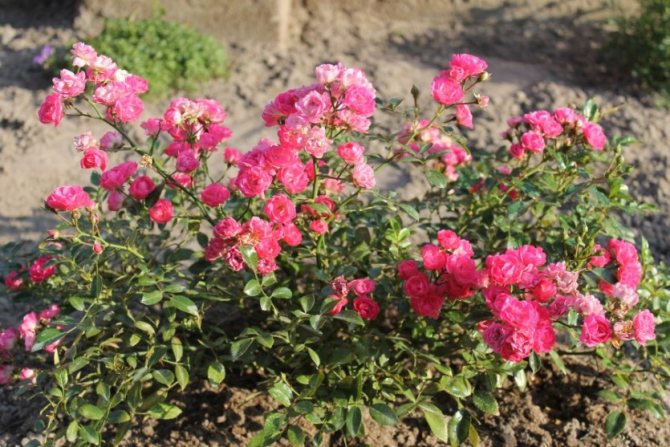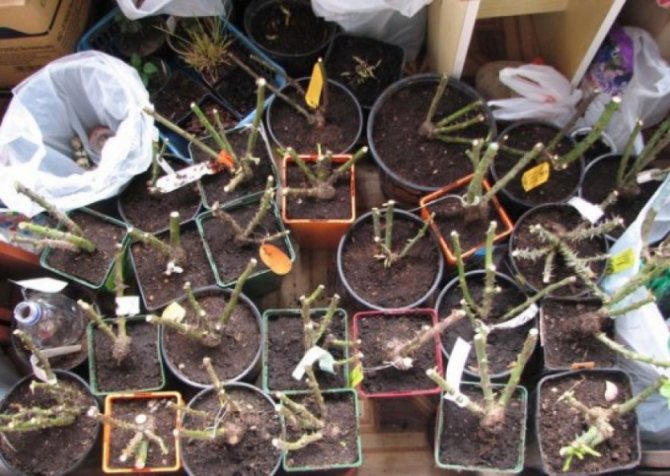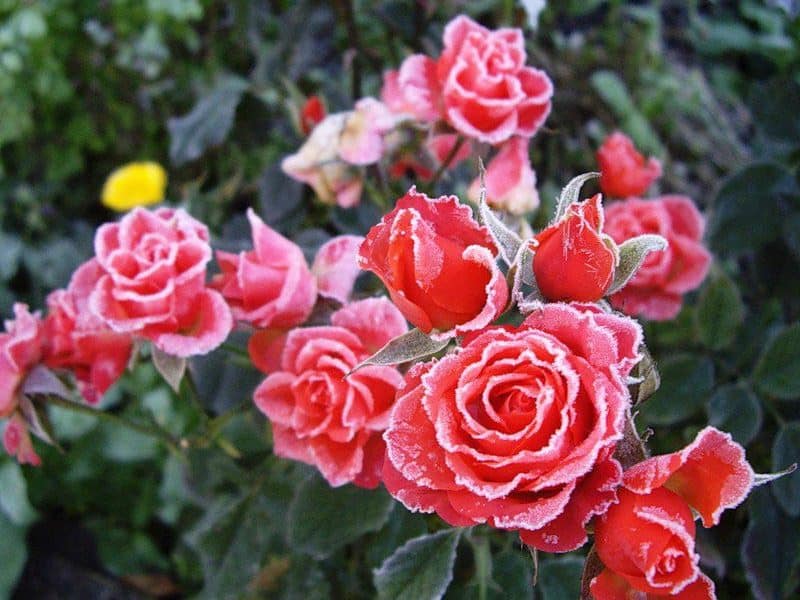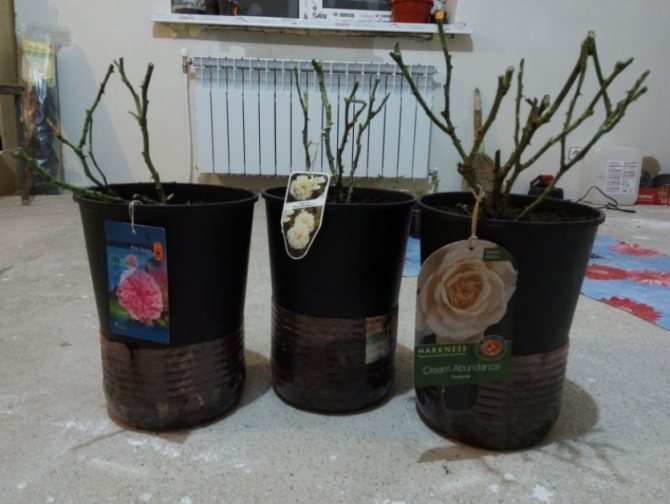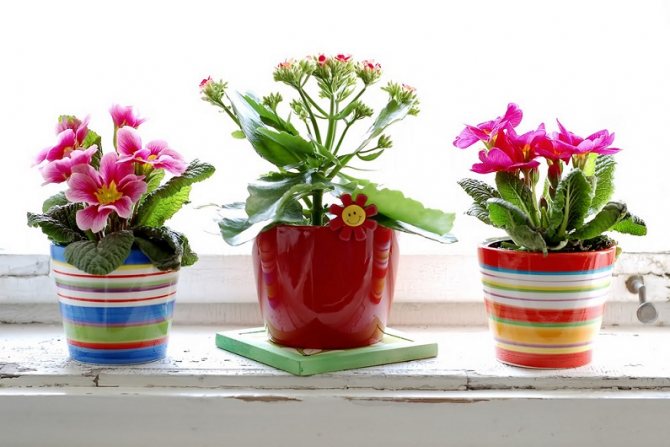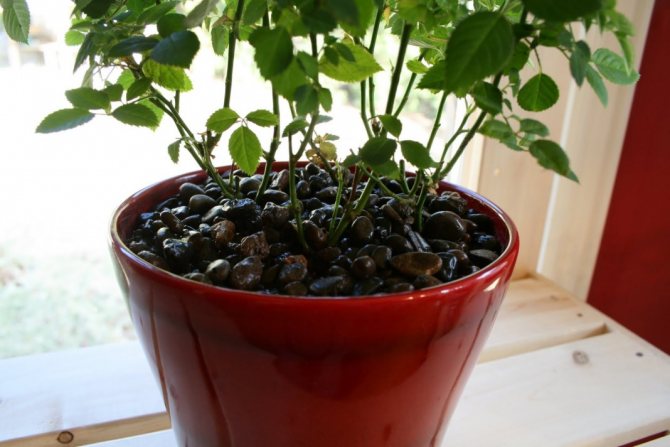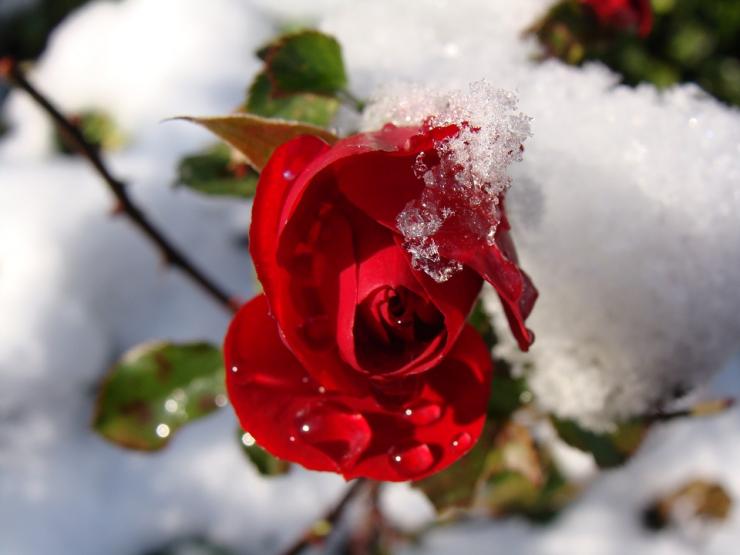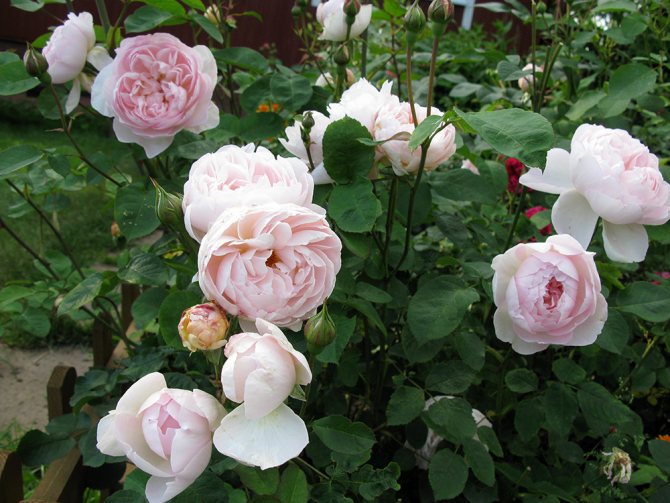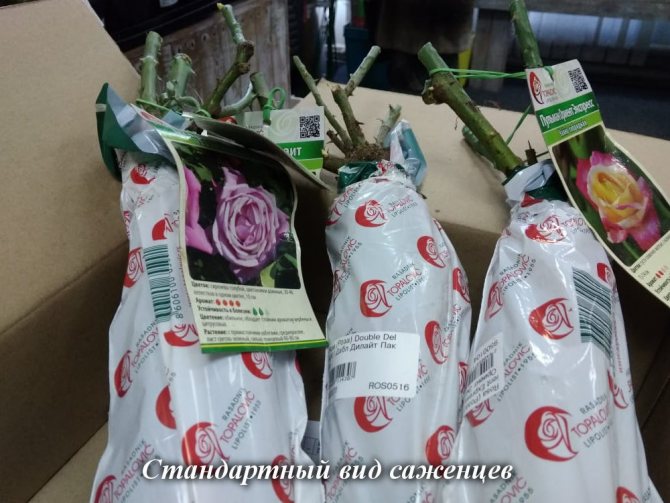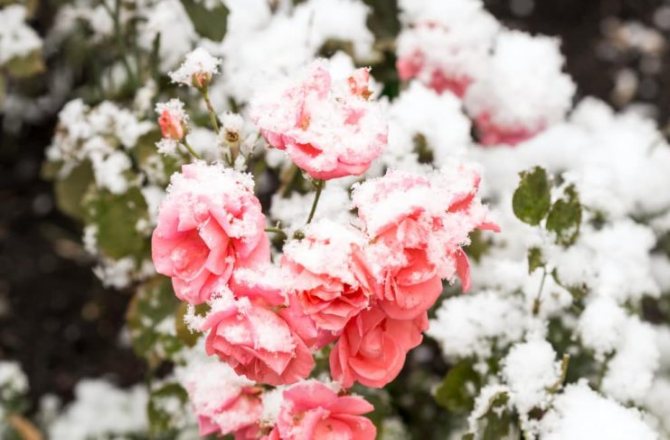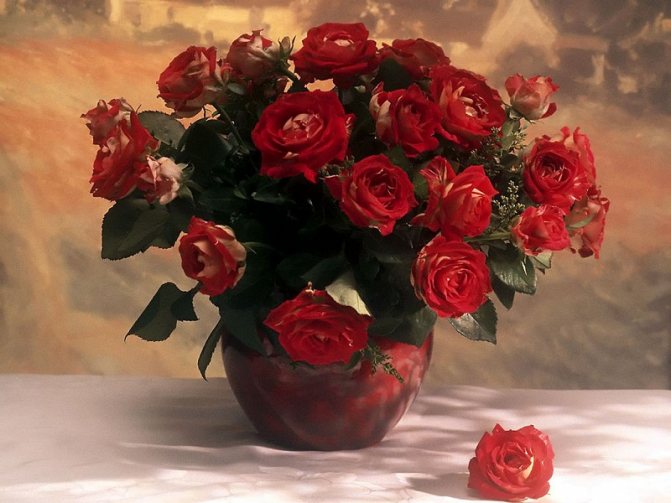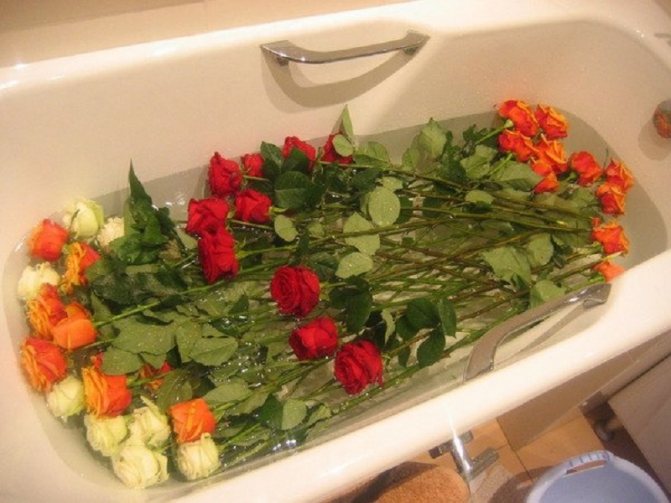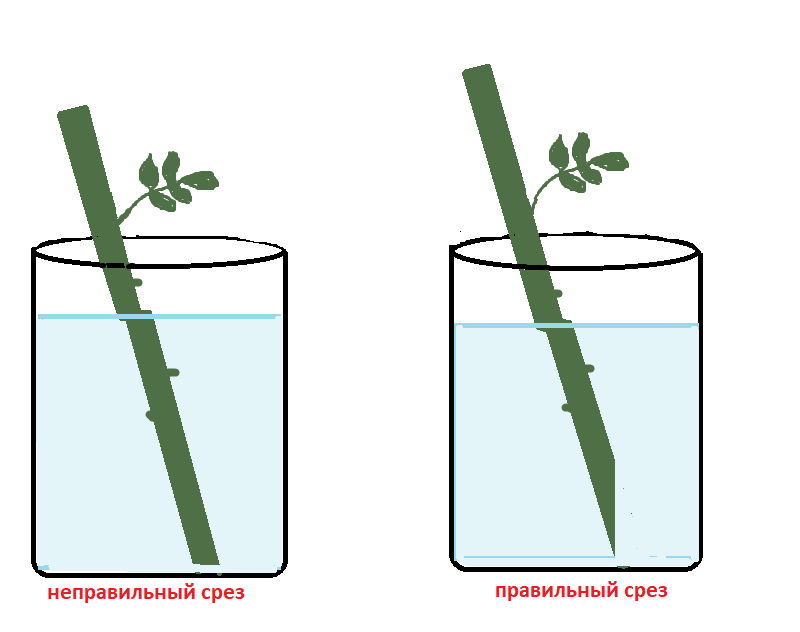- the main
- How to keep seedlings on the balcony - recommendations and advice
Jul, 10
no responses.
In the everyday life of gardeners, situations are not uncommon when planting material has already been purchased, and due to adverse weather conditions or the inability to get to the summer cottage, it cannot be planted. There are many examples of such situations, then the frosts will hit ahead of time in the fall, then the spring will still not clear up.
Fortunately, this problem is not a problem for a knowledgeable gardener, there are many ways to preserve planting material before planting without losing its quality. For townspeople, one of the most affordable options for storing seedlings before planting is an ordinary balcony.
A balcony is a great way to preserve your seedlings before planting.
We will devote this material to how to preserve seedlings on the balcony until spring.
At what temperature are roses covered in autumn? What kind of frost can roses withstand?
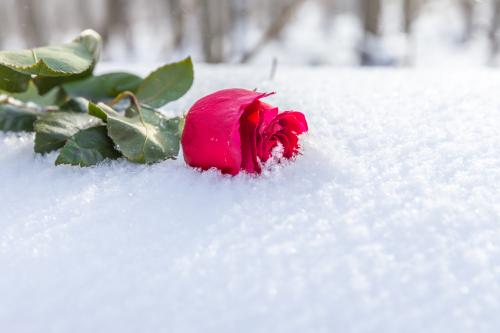
Roses react differently to frost with the onset of winter and spring, when the temperature regime changes almost instantly. The region in which the bushes are grown also plays a significant role.
Roses and winter frosts
Average temperatures that roses can withstand in winter without shelter are from -6 to -10 degrees. Most varieties tolerate a short-term drop in temperature to -15 without significant losses.
It is worth noting that different parts of the bush react differently to the first winter frosts - if -10 and even -12 degrees are not terrible for the ground part, then the root collar freezes already at -3.5 degrees.
For this reason, a minimal shelter is always organized for roses, sprinkling the necks with dry peat, sand or garden soil. In regions with warm winters, when the temperature rarely drops below -3 degrees, the culture perfectly tolerates the cold without shelter.
Overwintering with shelter is recommended when the thermometer drops below -8-10 degrees. Complete freezing occurs at -30 - this mark is critical for most varieties.
When the specified temperature is reached, the juices in the shoots of the plant freeze, turning into ice and tearing the tissue. This leads to the formation of microcracks, through which pathogenic bacteria subsequently penetrate.
What kind of frost can they withstand in spring?
Spring frosts are dangerous for roses, which in some regions can occur in April. Roses without shelter can withstand low temperatures from -1 to -3 degrees - such a cold snap passes unnoticed and harmlessly for them.
The frost resistance of covered and huddled bushes is higher, since a protective layer of spruce branches or an air gap guarantees successful transfer of low temperatures down to -7.
You should not rush to remove the shelter in the spring - it is advisable to wait until a stable heat is established.
Unprotected roses can suffer from strong and prolonged frosts from -7 degrees and below - not only branches will freeze on the bushes, but also opened leaves with buds.
Although this will not do much harm to the plant, it will postpone the flowering, since the budding will occur anew.
When to cover roses, taking into account the regional climate?
In order for the wintering of roses to pass without loss, it is important to choose the right time to organize a shelter. It should be cool enough for the bushes to slow down their activity - this will prevent active vegetation and subsequent damping.
It is recommended to build a shelter for roses at the following times for different regions:
- The middle zone and the Moscow region - the first or second decade of November. It is better to choose a dry, clear and windless day, when the temperature settles in the range of -5-7 degrees.
- Ural - end of October. The optimal conditions are considered to be a temperature of about -5 degrees and the presence of a layer of dry snow.
- Siberia - the last days of October - early November. The shelter process begins when the temperatures settle within -5, and ends after the soil freezes by a couple of centimeters.
For the southern regions of Russia, simple hilling is enough - an earthen hill will protect the root collar from freezing. Since winters in this region are most often warm and humid, it is better to use covering materials, under which the plantings will not be wiped out.
Storage in the country
Dacha is the best solution to the question of how to preserve purchased rose seedlings before planting. Here are two reliable methods of overexposure:
- In the garden under the snow. Plants with both dormant buds and shoots are suitable for this storage option. The shoots of the upper row are broken out, and the lower one is shortened. In a darkened place in the garden, in which the snow lingers the longest, they dig it into a snow hole, throw spruce branches into it or lay out planks. A plant is placed on top of this material. From above, the rose is covered with a box, lutrasil and the structure is covered with snow, forming a snowdrift. Planting in open ground is carried out after warming up the soil.
- In the basement. The essence of this method is similar to overexposure in a glazed balcony. Only the plant will need a temperature regulator (1-30 degrees) and the inclusion of an additional backlight for up to 12 hours. Seedlings are placed in open ground only when the threat of frost has passed.
Roses at. Roses. How to choose when buying


When buying roses in a store, as well as when delivering them (home, office, etc.), you must carefully make your choice. Let's figure out how to choose roses so that they are as fresh as possible and stay the same as long as possible and delight you with their beauty.
How to choose roses, what to look for when buying


- When choosing roses, pay attention to the appearance of the flower - it should not be damaged. There should be no smudges or microcracks on the petals.
- Leaves and stems of plants will also tell you about the state of flowers. If the roses are fresh, then the leaves should be light green, dense and shiny. If the leaves are lowered, this means that the bouquet is not the first freshness. The stem should be green and firm. Pay attention to the cut of the stem: a darkened, brown color of the cut indicates the beginning of the decay process.
- Most people believe that choosing roses in a closed bud is the best solution, that they are the freshest! However, this is a misconception. This is how flowers that were cut on plantations before ripening look more often. These buds will most likely never open fully.
- The bud should be firm enough. If it is too soft, the rose will wither quickly.
- It is more correct to choose roses, the buds of which are half or two-thirds open (this depends on the variety). These roses are the best option. This rule applies to almost all colors.
- The most obvious indicator of the freshness of roses is the sepals. If the sepals are upward, the roses are fresh. If the sepals are directed downwards, such roses are stale and will soon fade. The worst thing is when the sepals are dry and pressed against the stem, it means that the roses will wither very soon after purchase.
With the question of how to choose roses when buying, we more or less figured out. Now our task is to prevent the purchased roses from wilting quickly, but to stand as long as possible and delight with their beauty.
How to keep roses fresh for as long as possible
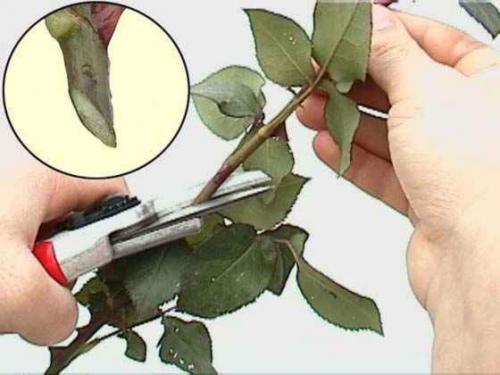

- Ideally, if the flowers are out of the water for as little time as possible, no more than a couple of hours.
- The larger the vase, the better. If there is a lot of water in the vase, then even the decay process that has begun will take place more slowly.
- In order for the bouquet to retain its freshness as long as possible, it must be sprayed with water every day. Do not put the presented bouquet in filtered water, the composition of such water will not prolong, but, on the contrary, will shorten the life of the flowers. Better to take tap water or boiled water.
- The water in the vase should be changed every day, each time updating the cut.
- You can add activated carbon to the water for disinfection. In flower shops, you can buy special preparations that are added to the water for a longer standing of flowers. As a top dressing, special agents are added (a bag is usually designed for 1 liter), but you can do with homemade ones: acetic acid, lemon juice or even vodka / alcohol (a teaspoon per liter of water). When changing water, you should also wash the vase and flower stems with soap.
- Do not put roses in a vase in the packaging, it is only intended for careful transport.
- Flowers must be cleaned from the bottom one third or half of all the leaves. Also remove any damaged leaves and petals. Leave all the leaves above, you should not completely cut them off.
- It is very important to remove the burgundy burrs immediately. They take a lot of useful substances, and a new bud will definitely not grow out of them.
- An oblique cut allows you not to pinch the capillaries in the stem, which contributes to better nutrition of the flower.
- It was also noticed that the fruits standing next to the bouquet have a bad effect on roses, as they emit ethylene, the roses will wither faster.
How to revive wilted roses
If the roses still wither a little, you can revive them by putting them in boiling water: Pour only 3-4 cm of boiled water, wrap the flowers and foliage with cloth or paper so as not to scald, before that we make a fresh cut. Leave the bouquet until the water has cooled. Then you need to make a new cut, and replace the water with warm (50 degrees).
If you need to keep the roses fresh, for example, the bouquet was bought in advance before the solemn date, the roses must be tightly wrapped in paper, immersed in water up to the flowers, refrigerated or taken out on a cool balcony.
Popular balcony varieties
- Orange Juvel (30-40 cm). A bush with orange flowers, which is characterized by a very delicate aroma.
- Loredo (45-50 cm). The bright yellow semi-double flowers of these roses retain their color even at very high temperatures.
- Mini Elo (up to 50 cm). A cupped bush with double golden flowers.
- Bambino (20-30 cm). A mini rose with a constantly fresh color of leaves is perfect for a very small balcony.
- Rouge Meilaw (40-60 cm). Roses with maroon double flowers.
- Watertag (30-40 cm). A ball-shaped bush with red-orange flowers that blooms continuously.
- Epricot Mailav (40-50 cm). Semi-double apricot flowers with a weak delicate aroma.
- Shnii Princesses (up to 40 cm). A spherical bush with white flowers.
- Madie (up to 40 cm). A bush with beige and dark cherry flowers.
- Pearl de Mosedo (up to 40 cm). Lilac flowers with abundant continuous flowering.
- Nostalgia (up to 60 cm). A bush with creamy and cherry double flowers, distinguished by a pleasant aroma, as well as good heat and cold tolerance.
- Leona (up to 75 cm). Light pink semi-double flowers with almost continuous flowering.
READ MORE: Keeping quails on the balcony
What temperature drop roses can withstand. What Happens to Roses when the Cold Falls
To obtain the decorative effect expected from roses, they must be carefully covered during the cold season. Without this, roses can die. Selection roses do not have the ability, like other perennial shrubs, to enter a dormant period in winter. They meet the cold weather with new young shoots and flower buds. Frost forces the plant to enter a dormant period forcibly. But this state is in no way reminiscent of the hibernation of other shrubs. Slightly the temperature rises above zero, the rose immediately resumes sap flow and continues the growing season.This feature is the main reason for the death of roses in winter. Roses, in principle, can withstand frosts down to -6 ° C and even a short-term drop in temperature to -12 ° C. But the juices in the plant freeze at a temperature of -3oC. They turn into ice, which breaks the tissue of the shoots, forming microcracks in them. Old shoots, unlike young immature ones, are not afraid of these cracks (frost cracks) (that's why young shoots of this year must be cut off before wintering). But these cracks are a very vulnerable place for pathogenic bacteria to enter the shoot. As soon as the temperature reaches zero, the sap flow begins, bacteria activate, penetrate the plant and infect it. Infection will not occur only if the roses are covered, the shelter will be dry and there will be no temperature changes until spring, until the time when the shelter is from roses must be removed.
Critical temperature for roses. At what temperature to cover roses for the winter: tips and tricks
There is an opinion that roses are capricious plants. But this is not at all the case. A rose requires care, dressing and watering no more often than its other cousin in a flower bed. It is important to properly cover these flowers for the winter so that the roots and stems are not too hot or cold.
Rose is not as delicate as she seems. After reading about the temperature at which to cover roses for the winter, many may be surprised. After all, not everyone knows that a bush with ripe stems will calmly endure frost down to -8 ° C. Excessive overheating and humidity during wintering are much more dangerous for a plant, because of which they can simply rip off. Therefore, it is important to know how to properly cover the roses.
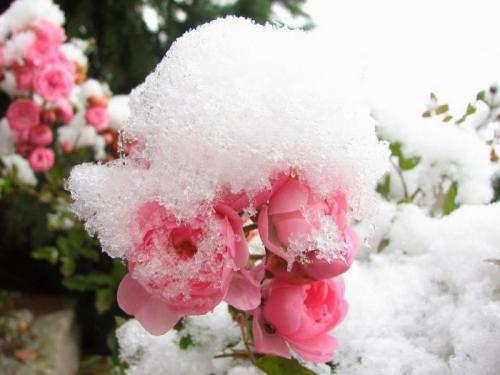

Firstly, there is no need to be frightened if it is -1 ... -3 ° outside, and the plants are not yet covered. Let them pass hardening in this way.
Secondly, in order for the bushes to winter well, they are not fed in the fall and watering is stopped.
Thirdly, if prolonged rains are expected in October, then the ground under the bushes should be covered with dense cellophane. Then the plant will not be afraid of excessive moisture during wintering.
Easy shelter for roses
They begin to warm roses for the winter when the weather has settled at 0 ... -1 ° С. Here is at what temperature experienced florists recommend to cover roses for the winter. Usually in the middle lane this corresponds to the beginning of November. But they should be bent to the ground until frost, at + 2– + 6 ° С, then the whips are more pliable.
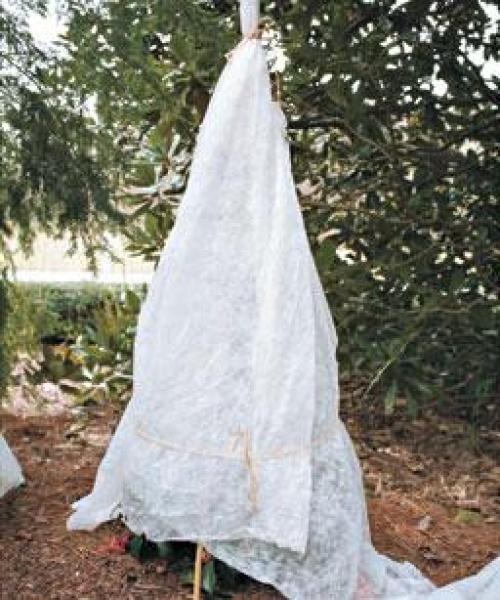

After the theoretical knowledge about the temperature at which roses are covered has been obtained, they should be prepared for winter. First, all unripe shoots are cut out. Low varieties of plants (floribunda, hybrid tea, ground cover) can be cut in such a way that the stems rise 10-15 cm from the ground. Climbing roses are bent to the ground using arcs, large hooks, hairpins. It is better to lay branches on spruce branches. For the prevention of diseases, the lashes are sprayed with a solution of copper sulfate in a ratio of 1:20 to water. Now you can pour 5-7 cm of high-moor light peat under the trunk and around it. The plants are covered with cellophane on top. In this form, they will stay until mid-late November.
It is important to know at what temperature to cover roses for the winter if their seedlings are brought from warmer regions. For example, standard plants are covered a little earlier, without waiting for severe frosts to come. Approximately at the end of October, when the night temperature reaches + 1 ... -1 ° С, they begin to heat insulation. A special cover made of spunbond, high-density lutrasil is put on top of the plant. The cape should be well secured so that it is not blown away by the wind and the plant is warm. In order for standard roses to winter better, they should be very carefully bent to the ground and also secured with arcs and hairpins.
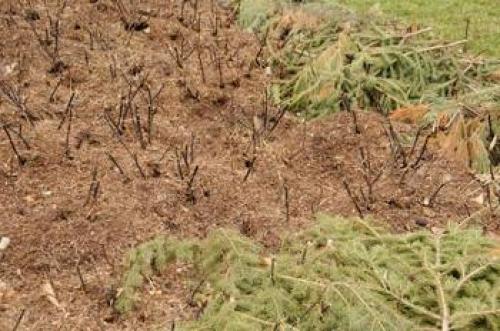

Capital Shelter of Roses
After the frosts have established (approximately at the end of November), a layer of spruce branches is placed on top of the plant, and then covered with tar paper or roofing material. This will help the roses to winter well and not be affected by rains, thaws, which can lead to their drying out.
Speaking about the temperature at which to cover roses for the winter, it should be summed up that the first light warming of plants is carried out at 0 ... -2 ° С, and in a more global way, they are wrapped up when the temperature overcomes the mark of -5 ° С.


